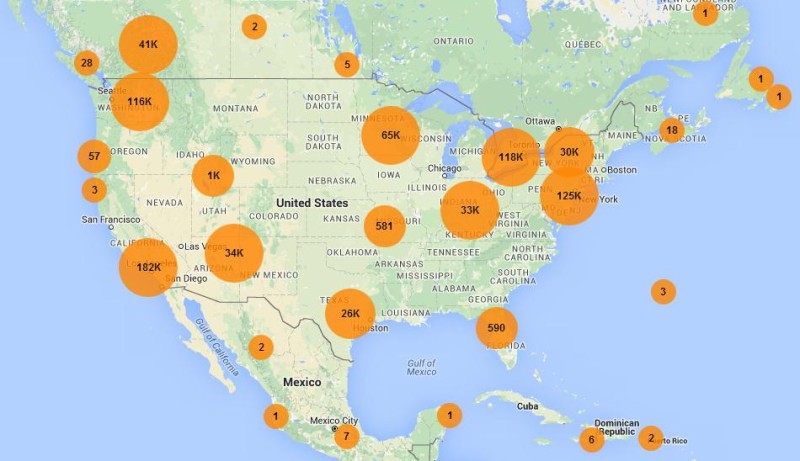Passionate environmentalists Caleb Phillips and Ethan Welty set out to “unite the efforts of foragers, freegans and foresters everywhere,” and came up with a map that points to over half a million food sources around the world.
They created a website that identifies fruit trees and other edible plants that are free for the taking in over 500,000 locations across the world. Entitled Falling Fruit, their website is a collaborative map of the urban harvest.

Fallingfruit.org
Based out of Boulder, Colorado, Falling Fruit is a nonprofit that relies on donations to stay in operation. According to their website, the group is a “celebration of the overlooked culinary bounty of our city streets.” The directors of the project hope to establish connections between people and the natural food sources around us.
There are other urban foraging sites out there, but Falling Fruit focuses specifically on contributions from the community. The mapping system they have created allows fellow foragers who could be across the world from one another to share information and tips about their findings.
Falling Fruit can lead users to grapefruit trees, pumpkin patches, spring water, edible mushrooms and more. Some sources are in parks, some are in alleyways, some are along hiking trails. The databases range from small neighborhood maps to professionally compiled tree inventories. Anyone can use the data, as well as add more sources of harvest when they come across something new.

Facebook/Falling Fruit
Datasets are broken up into two main categories — “community maps,” which as built by foragers and freegans, and “tree inventories” which are compiled by cities, universities, and other institutions wishing to document their trees.
This website is more than a few fruit and vegetable locations. The map includes locations of agave, aloe, crayfish, jackfruit, African oil palm, macadamia, Japanese red pine and much more, including dumpsters with excess food waste. (Yes, dumpsters.)

Facebook/Falling Fruit
According to the website’s public database, the most common plants listed are honey locust trees, followed by small-leaved linden, sugar maple, cherry plum and gingko trees. The site encourages foragers and private tree owners to donate their surplus produce to charity, such as Ample Harvest, Food Banks Canada and Global FoodBanking Network.
The organization has grown significantly since its launch in March 2013, expanding from a local database to an international one. In June 2015, they launched a mobile app to compliment their website, so users can now access the map right from their pockets, mid-forage. If scouring nature for food sources is a hobby of yours, Falling Fruit is perfect for you!
Similar to the forager followers of Falling Fruit, David Wolfe is a huge fan of foraging. Watch the video below to see David looking for natural food sources in the park.
h/t: the plaid zebra


